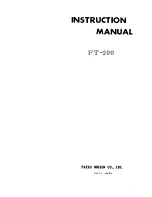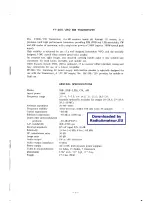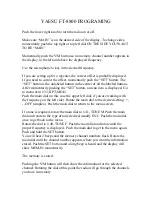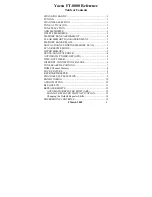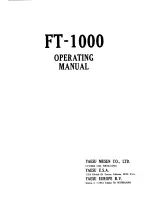
APT3100
Smart Pressure Transmitter
Operation Manual M3100-EO1G
7
Duon System Co.,Ltd.
2.1 Unpacking
When moving the transmitter to the installation site, keep it in its original packaging. Then, unpack the
transmitter there to avoid damage on the way.
2.2 Models and Specifications Check
The model name and specifications are indicated on the nameplate to the case. Please check your
specification and wanted model.
2.3 Storage
The following precautions must be observed when storing the instrument, especially for a long period.
(1) Select a storage area that meets the following conditions:
(a) It is not exposed to rain or water.
(b) It suffers minimum vibration and shock.
(c) If possible, it is preferable at normal temperature and humidity (approx. 25
°
C, 65% RH).
However, it has an ambient temperature and relative humidity within the following ranges.
●
Ambient Temperature: -40 ~ 85
°
C (without LCD module)
-30 ~ 80
°
C (with LCD module)
* General Use -20 ~ 60
°
C (CSA Explosionproof)
●
Relative Humidity: 5% ~ 98% RH (at 40
°
C)
(2) When storing the transmitter, repack it as nearly as possible to the way it was packed when
delivered from the factory.
(3) If storing a transmitter that has been used, thoroughly clean diaphragm surfaces (the pressure-
detector sections) of the diaphragm seals, so that no measured fluid remains on them. In addition,
make sure before storing that the pressure-detector and transmitter assemblies are securely
mounted.
2.4 Selecting the Installation Locations
The transmitter is designed to withstand severe environmental conditions. However, to ensure stable
and accurate operation for many years, the following precautions must be observed when selecting an
installation location.
(1) Ambient Temperature
Avoid locations subject to wide temperature variations or a significant temperature gradient. If the
location is exposed to radiant heat from plant equipment, provide adequate insulation or ventilation.
(2) Ambient Atmosphere
Avoid installing the transmitter in a corrosive atmosphere. If the transmitter must be installed in a
corrosive atmosphere, there must be adequate ventilation as well as measures to prevent intrusion
or stagnation of rainwater in conduits. Moreover, there should be appropriate ventilation preventing
corrosion by rain gathered on conduit.
(3) Shock and Vibration
Select an installation site suffering minimum shock and vibration (although the transmitter is
designed to be relatively resistant to shock and vibration)
(4) Installation of Explosion-protected Transmitters
Explosion-protected transmitters can be installed in hazardous areas according to the gas types for
which they are certified.
(5) Select a place that transmitter maintenance is very easy.
www.
.com
1.800.561.8187


























